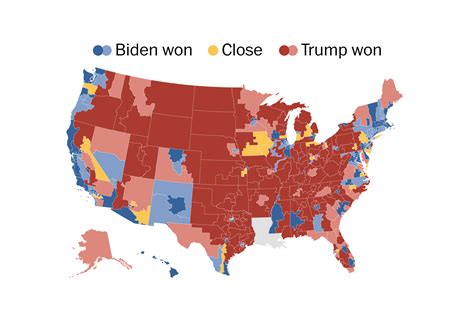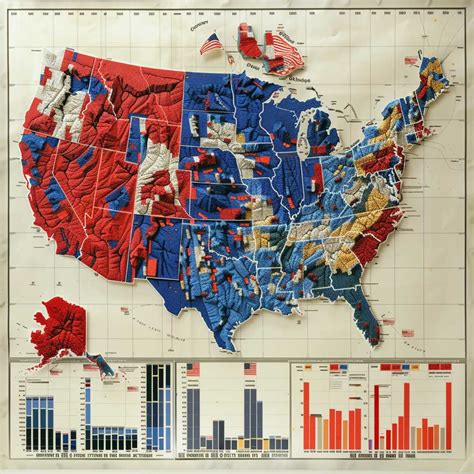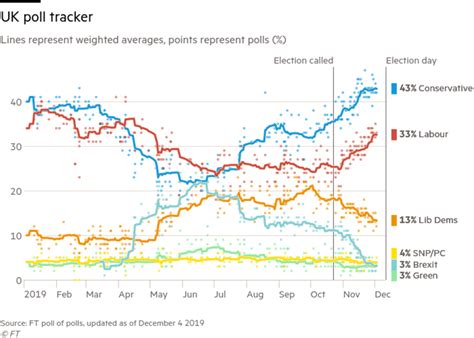Explore the 2024 electoral landscape, analyze key swing states, voter demographics, historical trends, and projected outcomes based on electoral votes.As we approach the pivotal year of 2024, understanding the electoral landscape is more crucial than ever. A Deep Dive Into The Electoral Map For 2024 offers an insightful exploration of the key dynamics shaping the upcoming election. This article delves into the current electoral landscape, examining which states hold the potential to swing the vote and the demographics that could influence outcomes. With historical trends providing context, we analyze past elections to better predict how they might impact 2024. From voter turnout to shifting party loyalties, our comprehensive approach will equip you with the knowledge to navigate this complex political terrain. Join us as we uncover the vital elements that will define this election season, providing clarity amidst the uncertainties and fostering informed discussions for an engaged electorate.
Understanding The Current Electoral Landscape In 2024
The electoral landscape in 2024 is shaped by a multitude of factors, each playing a crucial role in how candidates position themselves and how voters react. As we analyze the dynamics, it becomes evident that both political parties are navigating a complex terrain marked by shifting voter sentiments, emerging issues, and the implications of recent legislative actions.
One of the primary elements influencing the electoral map is the shifting demographics of the electorate. Younger voters, particularly those from diverse backgrounds, are becoming increasingly influential. Their preferences may lean towards candidates who prioritize climate change, social justice, and economic equity. Conversely, older voters and those in more rural areas may prioritize traditional values and economic stability.
In addition, the impact of key swing states cannot be overstated in the context of the upcoming election. States like Pennsylvania, Wisconsin, and Georgia are anticipated battlegrounds, with their electoral votes potentially deciding the outcome. The strategies that candidates employ in these regions will be critical, especially as they respond to the unique concerns of the local populations.
The political landscape is also being shaped by the aftermath of the COVID-19 pandemic and ongoing economic recovery efforts. Voters’ perceptions of leadership effectiveness in response to these crises will undoubtedly influence their choices at the ballot box. Issues related to healthcare, job security, and inflation will be paramount in the minds of voters as they head into the election.
Furthermore, it is essential to acknowledge the power of grassroots movements and social media in shaping public opinion. These platforms have become pivotal in mobilizing support and raising awareness about key issues. As a result, candidates who successfully harness these tools may gain significant traction, making them formidable players in the impending electoral scenario.
The current electoral landscape for 2024 is a convoluted interplay of demographic shifts, key state dynamics, and evolving voter priorities. Understanding these factors is vital for any analysis related to the electoral map, as they collectively define the political climate leading up to this significant electoral event. In many ways, this blending of factors can be seen as a deep reflection of the nation’s broader societal currents and divisions, which will shape the choices made by voters in the upcoming election.
Key States That Could Swing The Vote
As we approach the 2024 elections, understanding which states hold the potential to swing the vote is crucial. These battleground states can significantly impact the outcome, making them pivotal in any electoral strategy. Below are several states to watch closely:
| State | Key Factors | Recent Trends |
|---|---|---|
| Pennsylvania | High urban and rural divide, key college towns | Fluctuating between Democratic and Republican in recent cycles |
| Wisconsin | Strong presence of independent voters | Smith battle status, consistently impacting electoral votes |
| Michigan | Shifts in manufacturing jobs, urban vs. suburban votership | Democrats gained traction in past elections |
| Georgia | Diverse populations, increased voter turnout efforts | Recent Democratic victories in statewide races |
| Arizona | Changing demographics, large Latino population | Turning blue in recent elections |
The results in these key states could very well determine the trajectory of the 2024 election. Candidates will need to invest time and resources in these states to establish a strong presence and connect with voters. Monitoring shifts in voter sentiment and demographic changes in these regions will provide further insights as the election date approaches.
A Deep Analysis Of Voter Demographics
Understanding voter demographics is crucial for grasping the dynamics of the upcoming 2024 election. The electorate is not a monolith; it comprises diverse groups with varying priorities, values, and voting behaviors. In this section, we will delve into key demographic factors that are likely to influence voter decisions.
A Deep analysis reveals that age, race, gender, and educational attainment are significant indicators of voting patterns. For instance, younger voters tend to align with progressive policies, while older demographics often favor more conservative approaches. Additionally, racial and ethnic diversity within various regions can lead to differing electoral outcomes, as seen in past elections.
Gender dynamics are also a vital component, with women often supporting Democratic candidates in larger proportions than men. Furthermore, educational background plays a role in determining a voter’s political stance; individuals with higher education levels may prioritize different issues compared to those with less formal education.
Integration of these demographic insights can significantly impact campaign strategies. Candidates must tailor their messages to resonate with key voter segments to effectively mobilize them. This includes addressing the unique concerns and aspirations of diverse groups, such as working-class individuals, urban dwellers, and rural populations.
As we approach the election, tracking shifts in these demographics will be essential for predicting voter turnout and preferences. By looking back at previous voting behaviors and the changing landscape, we can anticipate how these factors may play out in 2024. Understanding the nuances of voter demographics is an ongoing process, yet it remains pivotal for anyone looking to comprehend the electoral map for the upcoming election.
Historical Trends Impacting The 2024 Election
As we analyze the electoral map for 2024, it is essential to recognize how historical trends can significantly influence election outcomes. Over the years, certain patterns have emerged that reveal how demographics, political shifts, and pivotal events have crafted the landscape we see today.
One of the most striking trends is the growing polarization between urban and rural voters. Urban areas have increasingly leaned towards the Democratic Party, driven by younger, more diverse populations, while rural regions tend to favor Republicans. This divide not only reflects geographical preferences but also cultural differences that have deepened over the decades.
Another key element is the impact of major national events, such as economic downturns, social movements, and significant Supreme Court decisions. Each has historically swayed public opinion and voter turnout. For instance, the economic implications of the COVID-19 pandemic reshaped priorities and could lead to increased voter turnout for parties emphasizing economic recovery and health care reforms.
Demographic shifts also play a crucial role in shaping electoral outcomes. The increasing diversity of the American electorate, particularly among younger voters, is likely to continue influencing political dynamics. Voter engagement initiatives targeting these demographics show potential to change long-standing voting trends.
Furthermore, the role of key historical electoral pivots cannot be understated. States that have flipped from one party to another in previous elections often foreshadow similar outcomes based on current sentiments. Examining the electoral history of battleground states will provide crucial insights into possible shifts in 2024.
To understand the upcoming election, one must recognize the significance of these strong historical trends. Each past election helps give context to the current electoral map, guiding predictions and expectations moving forward in what is shaping up to be an uncertain yet pivotal election year.
Projecting Outcomes Based On Electoral Votes
As we draw closer to the 2024 election, understanding how electoral votes are projected is crucial for predicting the overall outcome. The United States operates on a system where each state is allocated a specific number of electoral votes based on its population, which directly impacts the dynamics of the election. With a total of 538 electoral votes available, a candidate must secure at least 270 to win the presidency.
In this analysis, we will consider various factors, including current polling data, historical voting trends, and shifts in demographics, to project potential outcomes based on electoral votes. States that are traditionally considered swing states will be highlighted, as their electoral votes can significantly alter the course of the election.
For instance, states like Wisconsin, Michigan, and Pennsylvania hold a substantial number of electoral votes and have shown variability in their voting patterns over recent elections. In contrast, states like California and Texas, which have larger populations, consistently lean towards one party, making their impact more predictable in terms of electoral projections.
A deep understanding of these electoral dynamics requires close attention to voter sentiment and engagement levels, particularly in battleground states. Furthermore, we will utilize historical election data to simulate potential voter turnout and party support in the lead-up to November 2024.
By analyzing these variables, we can present a clearer picture of how the 2024 electoral map might unfold. This projection not only helps anticipate the possible winners but also guides candidates in strategizing their campaigns to maximize electoral support.
Overall, a deep dive into electoral vote projections serves as a valuable tool for both analysts and the public, providing insights into the evolving landscape leading up to one of the most pivotal elections in recent history.
Frequently Asked Questions
What is the Electoral Map for 2024?
The Electoral Map for 2024 represents the distribution of electoral votes across the states, indicating how each state is expected to vote in the presidential election.
How many electoral votes are needed to win the presidency in 2024?
A candidate needs a majority of the 538 electoral votes, which means at least 270 votes, to win the presidency in 2024.
What factors influence the Electoral Map in an election year?
Factors that influence the Electoral Map include demographic changes, historical voting patterns, local and national issues, economic conditions, and the popularity of the candidates.
Are there any key battleground states to watch in 2024?
Yes, key battleground states such as Pennsylvania, Wisconsin, Michigan, and Arizona are critical to watch, as they can swing either way and significantly impact the overall election results.
How does gerrymandering affect the Electoral Map?
Gerrymandering can distort the Electoral Map by drawing district lines in a way that favors one political party over another, which can lead to unbalanced representation and electoral outcomes.
What role does voter turnout play in shaping the Electoral Map?
Voter turnout is crucial as higher participation rates can shift the balance of power in favor of one party, particularly in competitive states and districts.
How can analysts predict changes in the Electoral Map leading up to the election?
Analysts use a combination of polling data, historical trends, demographic analyses, and major event impacts to predict changes in the Electoral Map as the election approaches.









